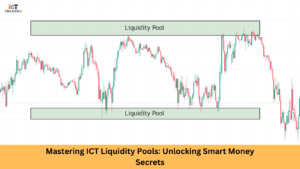Did you know that over 90% of retail traders lose money in the market? One major reason is inducement – a smart money trap that lures traders into bad positions. This guide will help you identify and avoid these pitfalls. You need to comprehend the motive behind inducement so that you do not fall into such traps but rather play along by trading with the market makers’ orders.
In this article, we will explain Inducement and its manipulation of market seeks, price action analysis for identifying inducement, types of inducement (CHOCH, BOS, Liquidity Grab), utilizing strategies to avoid inducement traps, and the best timeframes for trading pairs with inducement.
Understanding Inducement: The Smart Money Trap
Inducement in trading can be described as the manipulation of prices by smart money to entice retail traders to take adverse positions before the real move happens. It is a tool that induces false market psychology signals with the purpose of entrapment and therefore triggers traders to enter or exit trades prematurely.
Smart money, which comprise mainly institutional traders and hedge funds, uses inducement to create liquidity in the market. Retail traders mostly unaware of these tactics are often lured into the trap by profusely reacting to price movements. Understanding inducement is very important for traders seeking to go along with smart money moves rather than being a victim of them.
How Inducement Manipulates Market Psychology?
Inducements prey on traders’ psychology and therefore exploit common retail trading tendencies, such as:
- Fear and Greed: Traders follow price moves for fear of missing opportunities (FOMO) or panic and exit positions too soon.
- Breakout Trading Traps: The Majority of traders take positions during clear breakout movements only to see prices reverse back.
- Liquidity Engineering: Smart money needs liquidity to fill their big orders and hence create inducement zones where retail traders give that liquidity.
- Stop Hunts: Market makers thrust price into the key levels where retail traders place their stop-losses and grab liquidity before reversing the price.
How to Identify Inducement in Price Action?
Understanding how to recognize inducement during price action is one major safety principle to avoid falling into the traps made by smart money. Here are a few ways to identify inducements:
Fake Breakouts- The breakout that is either with low volume or without confirmation on a higher timeframe is more likely an inducement trap.
Liquidity Grabs- If the price aggressively goes toward stop-loss levels before reversing it indicates inducement.
Market Structure Shifts- Watch for sudden unnatural price movement that breaks minor levels but fails to continue in the expected direction.
Divergence in Momentum Indicators- Divergence occurs when price makes a higher high but the indicator (for example: RSI or MACD) suggests bearish divergence. That bearish divergence may be indicating a trap.
Types of Inducement & How They Work
Types of Inducement & How They Work
Let’s get started!
Inducement After a Shift in Market Structure (CHOCH)
A CHOCH occurs when after price creates a new structural high or low, the price then holds and reverses. This is often used for identifying a change in sentiment, for that case, smart money may take advantage of this opportunity to induce premature entry from the traders.
Inducement Following a Confirmed Break of Structure (BOS)
A BOS is when the price breaks a level, creating a continuation of trend confirmation. That being said, if this break is not accompanied by volume, it could be an inducement to get traders into false breakouts for a reversal to follow.
Inducement After Structural Breaks and Liquidity Grabs
For this, smart money engineers liquidity grabs by pushing price beyond key support/resistance, only to reverse sharply afterward. This is typically to shake out weak hands before the actual trend comes into being.
Best Strategies to Avoid Inducement Traps
Here are some of the best strategies to avoid inducement traps.
Wait for a Confirmation
Before entering into a trade, several confirmations can be used like volume analysis, candlestick patterns etc. As well as co-relate with higher time frame trends.
Use Liquidity Zones
Identify areas that are likely to be drawing liquidity before a real move happens.
Trade with Smart Money
You follow the institutional pattern of trading. For example, wait for the retest after a breakout rather than entering impulsively.
Risk Management
Always set the right stop loss, preferably far from common liquidity zones to avoid being prematurely stopped out.
Employ Multiple Timeframe Analysis
It is wise to analyze higher timeframes to confirm lower timeframe setups to escape false moves.
Best Timeframes and Pairs for Inducement Trading
Timeframes: The 15-minute, 1-hour, and 4-hour time frames offer the clearest view for setups for inducement.
Currency Pairs: Major forex pairs like EUR/USD, GBP/USD, and USD/JPY are highly susceptible to inducement because of high liquidity.
Stocks and Indices: In equities, institutions induce moves in the S&P 500, NASDAQ, and blue-chip stocks.
Crypto Markets: Bitcoin and Ethereum are the most frequent crypto coins to observe inducement patterns due to volatility.
Conclusion
Inducement is an essential concept in smart money trading, which induces retail traders into making decisions detrimental to their finances. By understanding how inducement works and recognizing its patterns, traders can place themselves with institutional moves rather than falling into traps. Proceeding with strategic confirmations, liquidity assessments, and solid risk management will ensure proper navigation through the market.
FAQs
What does inducement aim to achieve in trading, particularly?
Inducement is the method of creating liquidity for the smart money, thus drawing retail traders into unfavorable positions.
How would you avoid being caught in an inducement trap?
Waiting for confirmation, analyzing liquidity zones, and using multiple timeframes to validate will greatly reduce the chances of being caught in an inducement trap.
Do you think inducement applies only to forex trading?
No inducement runs through all financial markets: stock, indices, and cryptocurrencies.
What indicator can one use to detect inducement?
Sometimes, it is identified with momentum indicators such as RSI and MACD, or with price action tools such as trendlines and supports/resistances.
Does inducement always entail a reversal?
Not really. Inducement often entails reversals however, market conditions may suggest continuations.


